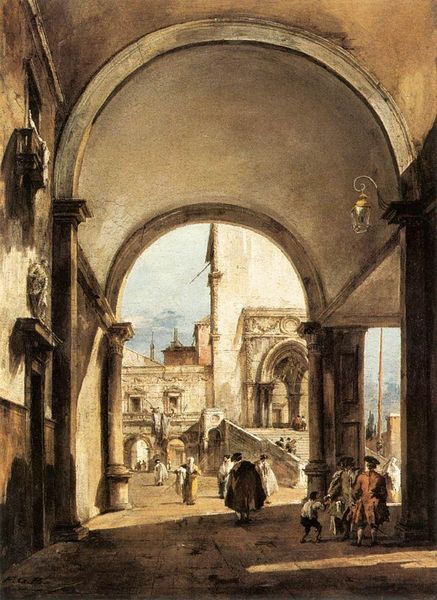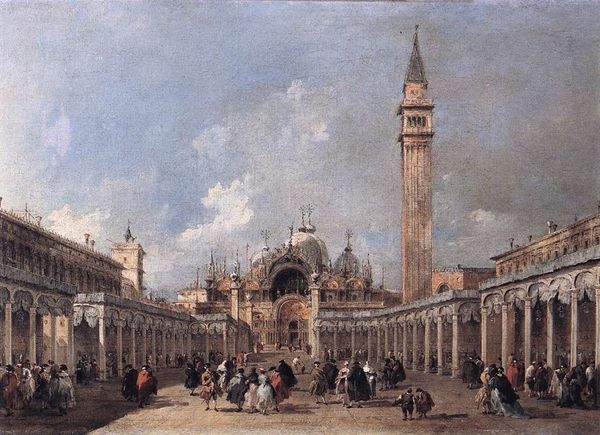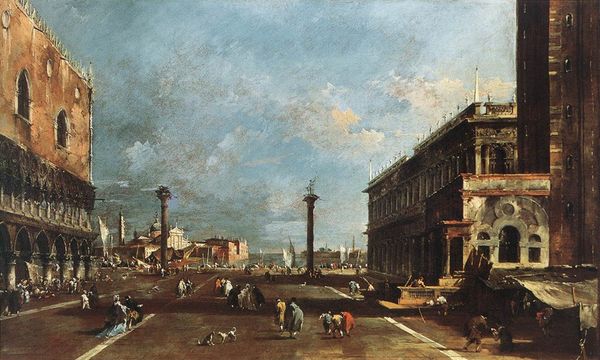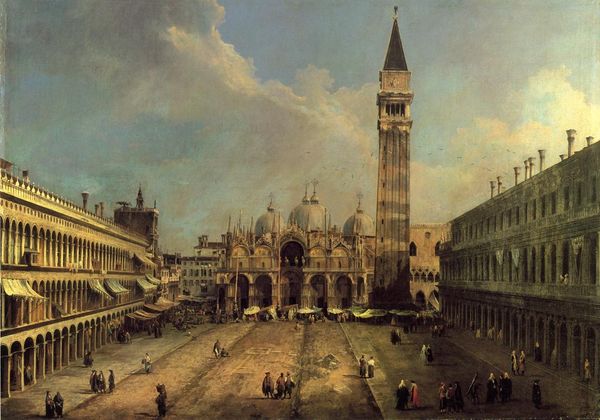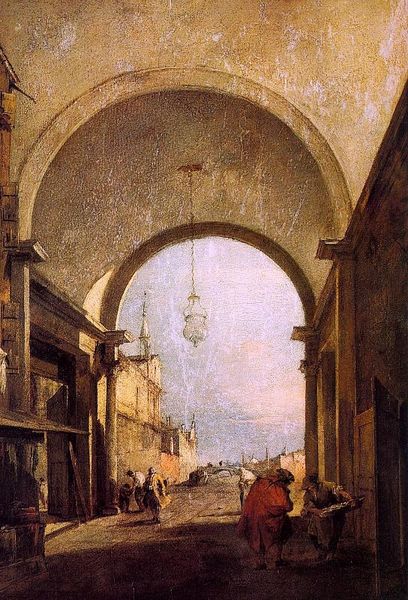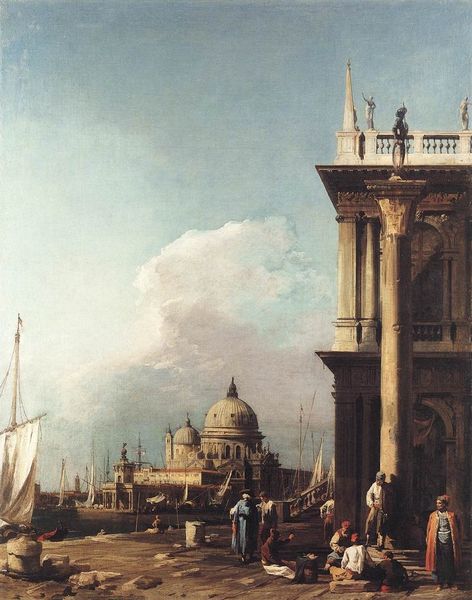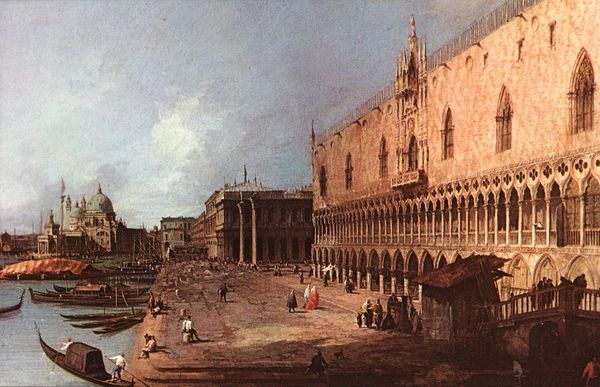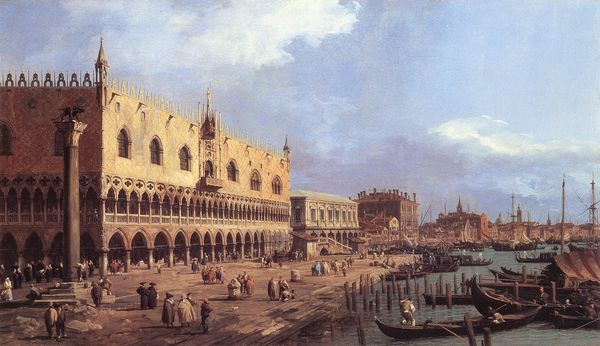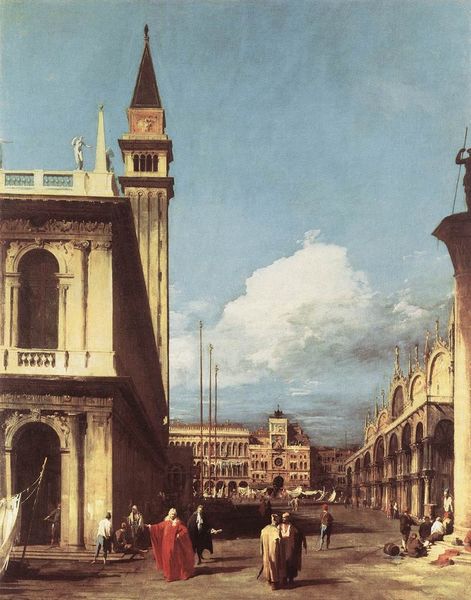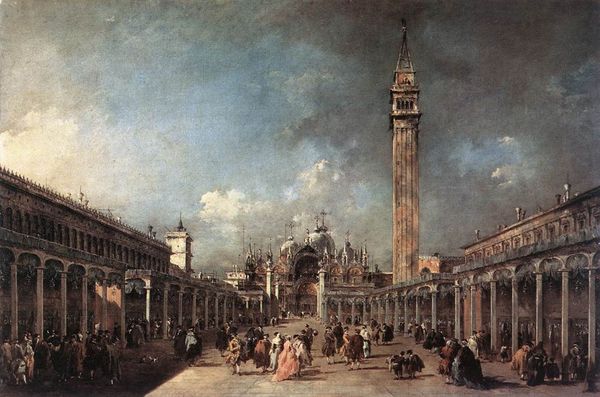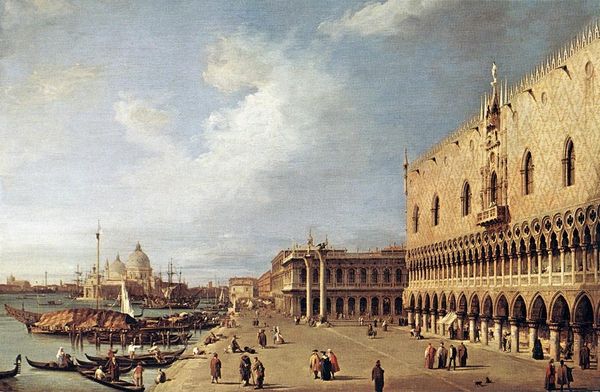
Piazza San Marco, Looking East from the Southwest Corner (Piazza San Marco and he Colonnade) 1756
0:00
0:00
Copyright: Public domain
Curator: Before us is Canaletto's "Piazza San Marco, Looking East from the Southwest Corner", painted around 1756. Look at the way he captures the light. Editor: Immediately, I’m struck by the composition's stark contrast between light and shadow. The architectural details fade into deep darkness under the arcades. It creates an almost theatrical sense of depth. Curator: Indeed. Note how Canaletto frames the composition; The colonnade on the right isn't just background, it actively shapes our view of the piazza, offering an exclusive perspective into Venetian public life. Editor: And he’s populated it with these meticulously rendered figures. The details are exquisite but in an almost documentary way, hinting at Venice's complex social fabric at that time. Those dog motifs are rather interesting; were dogs commonly seen on the Piazza San Marco during that era? Curator: Absolutely! Such paintings served as Grand Tour souvenirs, thus popularizing certain stereotypical depictions of Venice as a bustling maritime power with many dogs and cats among its social landscape. These served not only for personal nostalgia, but reinforced an imperial brand. Editor: That's fascinating! The materiality also stands out, The canvas feels almost secondary. Instead the linear structures of the building and its geometric exactitude feels most crucial for expressing space. How do the linear perspective and the play of light contribute to the overall reading? Curator: He uses linear perspective masterfully to emphasize the depth and grandeur of the piazza and in its detail of Basilica di San Marco itself, yet he also uses the contrast in light to soften edges to help achieve atmospheric perspective in painting to create that illusion of space. Editor: Thinking about our current climate, how do artworks like this influence or challenge our notions of national identity, specifically with Canaletto paintings finding a spot in the grand imperial narrative of those days? Curator: His painting offered the elite a means of self-validation, portraying a meticulously organized and beautiful city that confirmed their own status and cultural refinement. That depiction contrasts quite heavily from today's context on political representation. Editor: Well, I’ve certainly gained a richer appreciation for Canaletto's skillful manipulation of light and form. Curator: And I have found new nuances within Venice’s historical narrative through the careful gaze within this architectural depiction. A dialogue well-spent.
Comments
No comments
Be the first to comment and join the conversation on the ultimate creative platform.

